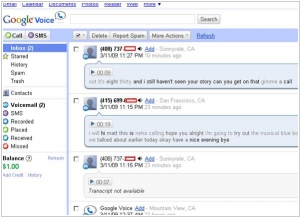Dialpad vs Google Voice
June 09, 2023 | Author: Adam Levine
14
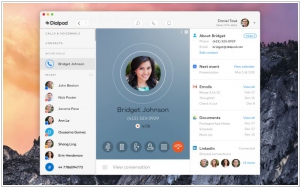
A business phone system that works the way it should. Reign in your remote workforce with a single place for business conversations, no matter the device or location. With mobile apps that make you feel like you’re working out of HQ, your business phone system now goes where you go. Understand why callers are reaching your business (plus what was said) with native Ai insights.
Dialpad and Google Voice are both popular communication solutions, but they have distinct features and focuses. Dialpad is a comprehensive cloud-based communication platform that offers voice calling, video conferencing, messaging, and contact center solutions. It provides features like advanced call management, integrations with productivity tools, and AI-powered transcription services. Dialpad is suitable for businesses of all sizes looking for a unified and feature-rich communication solution. Google Voice, on the other hand, is a free virtual phone service that provides basic calling and messaging capabilities. It offers features like call forwarding, voicemail transcription, and spam call filtering. Google Voice is designed for individuals and small businesses seeking a simple and cost-effective phone service. While Dialpad offers a broader range of features and capabilities, Google Voice provides a basic and no-cost option for users looking for a simplified phone solution.
See also: Top 10 Business Phone systems
See also: Top 10 Business Phone systems
Dialpad vs Google Voice in our news:
2020. Dialpad raises $100M Series E at a $1.2B valuation
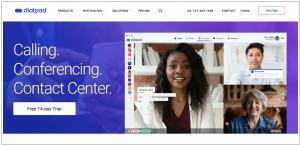
Dialpad, a voice, video, and contact-center service tailored for businesses, has successfully raised $100 million in Series E funding. With this latest investment, the company's valuation has surpassed $1.2 billion, following a total funding of $245 million. Notably, this funding announcement closely follows Dialpad's acquisition of the video conferencing service Highfive, a strategic move that bolsters its capabilities in mobile video and conference room devices. In recent times, Dialpad has placed significant focus on its AI solutions. In 2018, the company introduced its VoiceAI service, and it has since expanded its offering to include various AI-powered features under its Voice Intelligence service, known as Vi. These features encompass a note-taking service, call transcripts, sentiment analysis, and more. Note: The provided link is a placeholder and may not lead to the actual website.
2020. Dialpad acquires video conferencing service Highfive
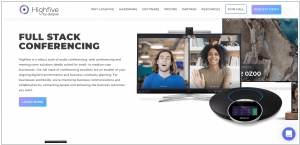
VoIP provider Dialpad, known for its popular video conferencing service UberConference, has recently completed the acquisition of Highfive, a well-funded startup specializing in video conferencing solutions for conference rooms. With this strategic move, Dialpad is significantly reinforcing its focus on video capabilities. Although UberConference already includes video conferencing features, it has primarily gained recognition for its calling features. Alongside its conference call solutions and VoIP platform for businesses, Dialpad also provides a comprehensive contact center solution.
2018. Google Voice version for enterprise came to G Suite
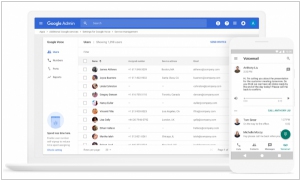
Google is introducing an enterprise version of its Google Voice service exclusively for G Suite users. While Google Voice has traditionally been popular among everyday consumers, offering numerous advantages beyond a regular phone number, the enterprise version aims to provide companies with similar functionalities. This includes AI-powered features such as voicemail transcription, which employees may already be utilizing in a manner that bypasses company guidelines. Administrators have the capability to provision and transfer phone numbers, access comprehensive reports, and configure call routing options. They can also assign phone numbers to departments or employees, granting them a universal number that isn't tied to a specific device. This simplifies communication by ensuring easy accessibility when needed. Additionally, the enterprise version includes a spam filtering feature, which proves beneficial in handling the influx of unwanted automated calls for various purposes.
2018. Dialpad acquired AI-startup TalkIQ
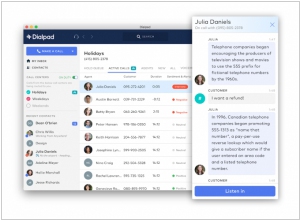
Dialpad, the platform for business communications, has made an acquisition to leverage artificial intelligence capabilities. The company has acquired TalkIQ, which specializes in capturing voice data in nearly real-time and applying sentiment analysis and analytics. This integration of AI technology allows for real-time feedback and provides valuable insights for customer service operations. Managers can receive guidance on when to intervene during a call. The functionalities of TalkIQ will be seamlessly integrated into the suite of Dialpad apps, including voice and video communication, customer service call center management, and UberConference for conference calling.
2017. Google Voice gets group chat and other new features
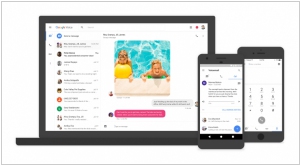
Google has introduced a refreshed version of its VoIP calling service, Google Voice, across mobile and web platforms. The primary focus of this update is to provide the product with a modernized look and feel, as it had not received significant upgrades for quite some time. Alongside the visual enhancements, the relaunch brings several new features, including photo-sharing, group conversations, Spanish-language voicemail transcription, and more. In the updated app, Google Voice incorporates separate tabs in the inbox for text messages, calls, and voicemail, as explained in the company's blog post. Additionally, conversations now remain in a continuous thread, simplifying the process of keeping track of messages from contacts within a single location.
2011. Google adds phone conferencing to Hangouts
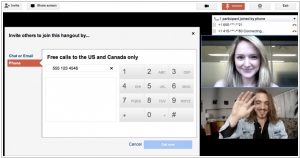
Skype's killer feature that propelled its immense popularity was undoubtedly video calling. The revenue generator for Skype is IP telephony. Google, however, was unable to replicate the same success with GTalk/GMail/Google Voice as people had already become accustomed to Skype. Nonetheless, Google aims to make strides with its rapidly expanding group video chat platform, Google Hangouts. Google's strategy involves integrating Hangouts with IP telephony. The new feature in Google Hangouts enables users to make calls to landlines and mobile phones, allowing individuals who are not currently at a computer to join online meetings. This integration is particularly crucial for business meetings, as it facilitates connecting clients or partners to the discussion. Presently, these external calls are limited to the United States and Canada and are free. However, it is highly likely that this functionality will soon be available in other countries through paid Google Voice calls.
2011. GMail VoIP is available almost globally
The VoIP service in GMail, previously available only in the U.S. and Canada, is now accessible to users in nearly all countries worldwide, supporting 38 different languages. However, there are a few countries where Gmail Call Phone is currently not available, including Argentina, China, Cuba, Egypt, Ghana, India, Iran, Jordan, Kenya, Mexico, Morocco, Myanmar, Nigeria, North Korea, Peru, Russian Federation, Saudi Arabia, Senegal, South Korea, Sudan, Syria, Thailand, United Arab Emirates, and Vietnam. With this global expansion, Google has also reduced its VoIP rates, making them slightly more affordable compared to its main competitor, Skype. For instance, a call to France costs 8 cents (compared to 16.9 cents in Skype), and a call to the USA costs 1 cent (compared to 1.9 cents in Skype). Similar to before, using GMail Call Phone requires a quick installation of a browser plug-in, which is the same plug-in used for video calling in GMail.
2010. Google added 60 more services to Google Apps
As part of their commitment, Google has now incorporated consumer services, which were previously limited to individual users, into the Google Apps suite. Recently, they introduced Google Voice (currently available for US and Canada users only), and today, they have expanded the offering to include a selection of 60 Google services. The account administrator has the flexibility to choose which services to include and which ones to exclude. Furthermore, the administrator has the authority to specify which users or groups will have access to each service. For instance, the marketing staff can be granted access to services like Adwords (for advertising purposes), Google Analytics (for monitoring site statistics), Blogger, and YouTube (for managing corporate blogs and video content). On the other hand, IT professionals may find Google App Engine useful for developing business applications. Other potentially valuable services for businesses include Google Reader (as an enterprise RSS reader) and Picasa (for creating intranet galleries). It's important to note that the option to add new services is also available in the free version of Google Apps.
2010. GMail = Unified Communications client
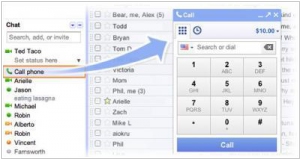
Few days ago the analytical company Frost & Sullivan stated that Google will soon storm the unified communications market, which is dominated by Cisco, Avaya and Microsoft. After all, Google has GMail, Google Voice, GTalk, Buzz, Gizmo5, Android, GISP and it remains just to combine all these technologies into single offering. And Google has decided to immediately confirm this forecast - from today GMail allows you to make and receive phone calls (thanks to the integration with Google Voice and Gizmo5). Meanwhile the VoIP service in GMail is available only in US. ***
2010. Google Voice hacked iPhone by means of HTML5
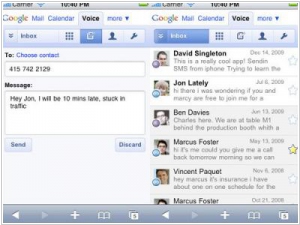
The story of Google Voice ban on the iPhone is over. Thanks to Apple and AT&T, Google Voice app hasn't arrived to iPhone yet. That's why Google went the other way and launched the web service, that works in the mobile Safari browser just like the native application. It allows you to make calls via the Web interface, view and listen to the voice mail, send and receive text messages. But the most interesting thing in this story is that the emergence of this application may cause a revolution in the current mobile marketplace. Earlier we wrote about the political games around the HTML5 implementation. And one of the major players in these political games is Apple, the manufacturer of the most popular mobile device, iPhone, which is known for its closeness. No application can get to iPhone unless it's approved by Apple. ***

